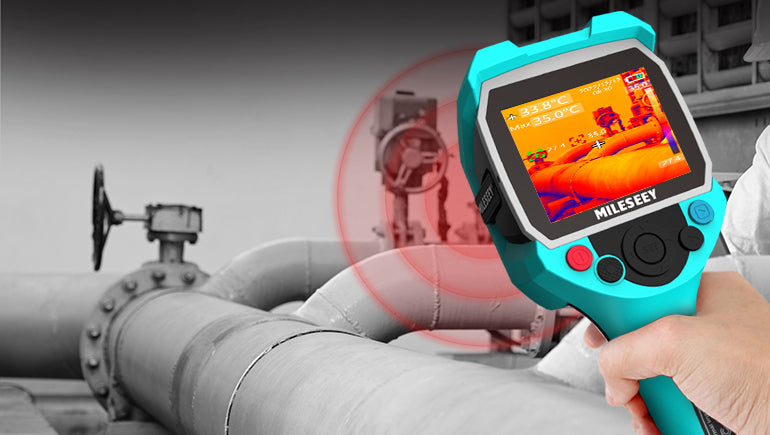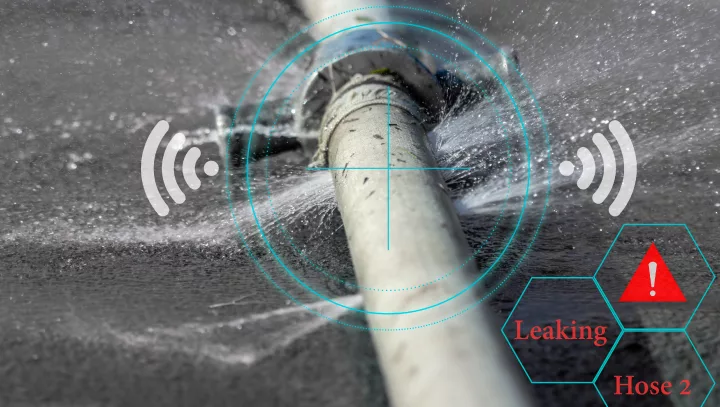The Importance of Routine Water Leak Detection for Long-Term Home Security
The Importance of Routine Water Leak Detection for Long-Term Home Security
Blog Article
Ingenious Solutions for Early Discovery of Water Leaks in Structures and Infrastructure
As the honesty of structures and framework is critical, the obstacle of early discovery of water leaks has spurred ingenious services that assure to transform the means we protect versus potential damages. From sophisticated leakage discovery technologies to the release of IoT sensors for real-time tracking, the landscape of leakage avoidance is developing rapidly. Equipment learning algorithms use a glimpse into the future of leakage forecast, while thermal imaging provides a non-intrusive technique for determining hidden leaks. Automated water flow evaluation systems are improving just how leaks are determined and resolved, leading the way for a positive technique to water leakage detection. Each of these options holds the vital to ensuring the reliability and durability of our developed setting, motivating a shift towards a much more sustainable and effective future.
Advanced Leak Discovery Technologies
Advanced leakage discovery innovations, equipped with sophisticated sensors and formulas, play a vital role in promptly determining and identifying water leaks in numerous settings. Electro-magnetic sensing units can identify adjustments in electro-magnetic fields created by water, providing yet another layer of leak discovery capability.

IoT Sensors for Real-Time Surveillance
In the world of modern water leak detection, the combination of IoT sensing units for real-time surveillance represents a critical improvement in boosting aggressive leak detection capabilities. These sensors supply continual monitoring of water systems, offering real-time data on water flow rates, pressure variations, and temperature modifications. By leveraging IoT modern technology, these sensing units can detect even the tiniest abnormalities in water use patterns, making it possible for early identification of prospective leaks before they escalate into significant concerns.
IoT sensing units transfer data to a centralized system, where innovative formulas evaluate the details and create alerts or alerts when abnormalities are detected. This real-time monitoring capacity permits homeowner or facility managers to promptly resolve leakages, lessening water damage, reducing repair service costs, and saving water resources.
Furthermore, IoT sensors can be incorporated with building management systems, enabling automatic reactions to found leakages, such as turning off water valves or turning on pumps to mitigate the influence of leaks. Overall, the execution of IoT sensors for real-time monitoring dramatically improves the efficiency and performance of water leak discovery in buildings and infrastructure.
Artificial Intelligence Algorithms for Leak Prediction

One secret advantage of using artificial intelligence for leak prediction is its capacity to constantly find out and boost its accuracy over time. As even more data is accumulated a knockout post and fed into the algorithm, it can fine-tune its predictions and adjust to changing problems, ultimately raising the dependability of leakage detection systems.
Furthermore, machine discovering algorithms can aid in determining refined indications of leakages that may go undetected by standard monitoring techniques. water leak detection. By analyzing complicated data sets in real-time, these formulas can supply early cautions and informs, permitting prompt treatment and precautionary upkeep to alleviate prospective water damage and linked expenses
Making Use Of Thermal Imaging for Leak Detection
Thermal imaging innovation provides an appealing approach for finding water leakages in different systems and facilities. By making use of infrared radiation and temperature variations, thermal imaging electronic cameras can identify surprise leakages that are not quickly noticeable to the naked eye. When water runs away from pipelines or structures, it commonly changes the temperature of the surrounding location, producing temperature level differentials that thermal cams can capture. These temperature level abnormalities are then converted into noticeable pictures, highlighting the specific location of the leak.
Among the vital advantages of thermal imaging for leakage discovery is its non-intrusive nature. Unlike standard methods that might require getting into wall surfaces or floorings to locate about his leakages, thermal imaging enables for non-destructive testing. This not only saves time and reduces costs but additionally decreases disturbance to the structure or facilities being evaluated. Additionally, thermal imaging can rapidly check large areas, giving an extensive overview of possible leakage sources in a prompt way. On the whole, making use of thermal imaging modern technology improves the efficiency and precision of water leakage detection, making it a valuable device for preserving the stability of buildings and frameworks.
Automated Water Flow Evaluation Systems
Exactly how can automated water circulation analysis systems reinvent the detection and administration of leaks in different systems and facilities? Automated water circulation analysis systems supply a proactive strategy to leak discovery by continually checking water circulation prices and patterns. By developing baseline information, these systems can quickly determine deviations that may show a leak, enabling prompt intervention to avoid considerable damages.
These systems utilize innovative algorithms to examine real-time data and give immediate signals when anomalies are discovered, allowing for swift action to be taken. Furthermore, computerized water flow evaluation systems can be integrated with building administration systems or IoT systems, boosting total efficiency and enabling remote tracking abilities.
Additionally, the data collected by these systems can be used for predictive upkeep objectives, my explanation aiding to recognize prospective powerlessness in the framework before leakages take place. On the whole, the execution of computerized water flow analysis systems can considerably enhance leakage detection and management practices, inevitably bring about set you back savings, reduced water wastefulness, and increased sustainability in buildings and framework.

Conclusion
To conclude, the combination of sophisticated leakage discovery modern technologies, IoT sensors, artificial intelligence algorithms, thermal imaging, and automated water flow analysis systems provides innovative services for early detection of water leaks in structures and framework. These modern technologies make it possible for real-time surveillance, forecast of leakages, and effective detection techniques to stop water damage and wastage. Implementing these solutions can help in maintaining the honesty and sustainability of water supply in different settings.
Report this page